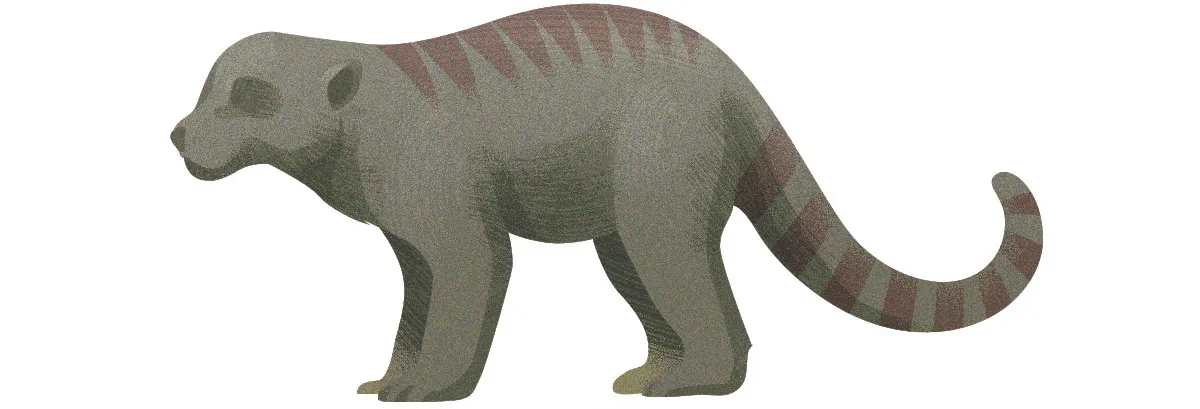The ancient mammals were a weird bunch. Here are some of the strangest ones that scurried, stalked and clambered their way across ancient Earth, millions of years ago.
Morganucodon

Triassic, around 205 million years ago
Morganucodon was one of the very first mammals, living alongside some of the first dinosaurs. The size of a mouse, it had all of the classic features of mammals: hair, large brains (compared to reptiles), specialised teeth (incisors, canines, premolars, molars), and hyper-sensitive ears.
Repenomamus

Cretaceous, around 125 million years ago
About the size of a badger, it was one of the largest mammals that lived with dinosaurs. One fossil was found with baby dinosaur bones in its stomach, a last meal that inverts the classic story: some dinosaurs would have actually feared mammals.
Cimolestes

Cretaceous, around 66 million years ago
A scurrier that looked like a shrew, this anonymous mammal was either a very primitive placental or a close relative of the group. It is emblematic of the types of mammals living with the last dinosaurs, right before the asteroid hit.
Wortmania

Palaeocene, around 65.6 million years ago
A taeniodont, one of the groups of ‘archaic’ placentals that took over from the dinosaurs. It was a gargoyle-like digger, which used its massive, clawed forearms to rip through dirt. Its huge jaws and enlarged canines allowed it to eat tubers and other tough foods.
Eoconodon

Palaeocene, around 65.6 million years ago
The terrors of the early Palaeocene, this triisodontid was the top predator in its ecosystem, and preyed on condylarths and taeniodonts. Living soon after the extinction, it took over top predator niches from carnivorous dinosaurs like raptors.
Pantolambda

Palaeocene, around 64 million years ago
An archaic placental called a pantodont, it was among the first large plant-eating mammals in Earth’s history. About the size of a small cow, it had a barrel-shaped chest and enlarged hands and feet.
Periptychus

Palaeocene, around 63 million years ago
Periptychus is acondylarth, a member of a nebulous group, Condylarthra, of plant-eaters and omnivores with sturdy builds and hooves on their feet. There have been hundreds of ‘condylarth’ species described, but these have been hard to classify. Recent evidence indicates some of them may be early relatives of horses and cattle.
- This article first appeared inissue 378ofBBC Science Focus Magazine–find out how to subscribe here
Read more about mammal evolution:
